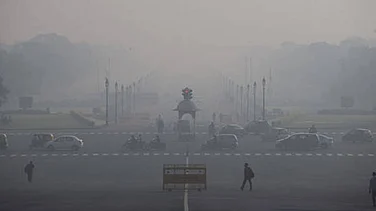In Kerala's Wayanad, where landslides on July 30 killed over 230 people, is under an orange alert, with the India Meteorological Department (IMD) warning of heavy rainfall in parts of ecologically-fragile district.
The deadly landslides of July 30 that struck the Wayanad towns in the early hours have led to more than 230 deaths with chances still standing of more bodies getting retrieved from the ravaged tragedy-hit areas.
Wayanad, a hill district in northern Kerala, till July 29 was a popular tourist hub known for its lush green forests, rolling hills, and sparkling waterfalls. having a population of about 8,17,000 people and being home to various cultures, including the indigenous tribal communities.
The picturesque hamlets of Mundakkai, Chooralmala, Attamala, and Noolpuzha in Kerala's Wayanad turned into deserts as the landslides swept away roads, bridges, houses and changed the course of rivers.
IMD Alert For Wayanad
The IMD has predicted heavy rainfall (7 cm to 11 cm in 24 hours) to very heavy rainfall (12 cm to 20 cm in 24 hours) in one or two places in Ernakulam, Thrissur, and Kannur on Wednesday, and in Kozhikode and Wayanad on Thursday.
Meanwhile, a 'red' alert was issued for Lakshadweep, warning of extremely heavy rainfall (more than 20 cm in 24 hours) at isolated places on Wednesday.
A global team of scientists said on Wednesday that the deadly landslides in Wayanad were triggered by an intense burst of rainfall, made 10 per cent heavier by climate change, according to a news agency PTI report.
The team, consisting of 24 researchers from India, Sweden, the US, and the UK, said that over 140 mm of rainfall fell in a single day on soils already saturated by two months of monsoon precipitation, triggering catastrophic landslides and floods.
Other researchers have also linked the Wayanad landslides to a combination of factors, including forest cover loss, mining in fragile terrain, and prolonged monsoon rains followed by heavy precipitation.
IMD VS Kerala Govt On Weather Warning
On August 1, a day after Kerala Chief Minister Pinarayi Vijayan slammed Home Minister Amit Shah for blaming the state over the deadly July 30 landslides in Wayanad, the IMD said that the state was issued a red alert early morning on the day the tragedy struck.
Union Home Minister Amit Shah on July 31 said the Kerala government did not heed the Centre's warning regarding a possible natural calamity in Wayanad due to heavy rains.
Responding to Shah's claim, Kerala Chief Minister Pinarayi Vijayan said on Wednesday that the IMD had only issued an orange alert in the district ahead of the landslides.
During an online press conference on August 1, IMD chief Mrutyunjay Mohapatra said the weather department had issued an extended-range forecast for significant rainfall activity along the west coast of India on July 18 and July 25.
Mohapatra also said that Kerala was issued an orange alert, however, added that it means "be prepared" rather than "waiting for red warnings."
"The long-range forecast issued on July 25 indicated good rainfall activity along the west coast and central parts of the country from July 25 to August 1," news agency PTI quoted Mohapatra as saying.
















